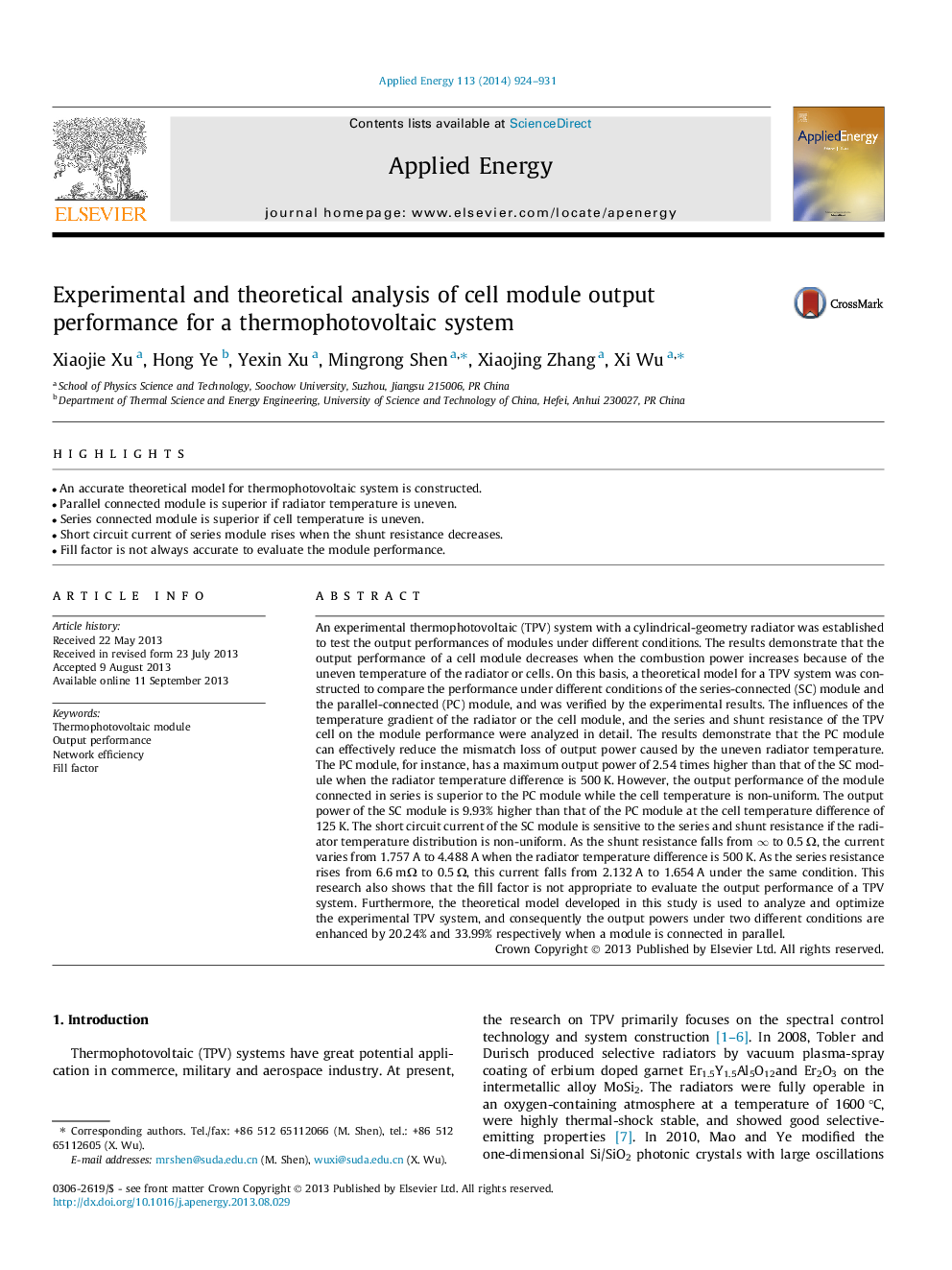| کد مقاله | کد نشریه | سال انتشار | مقاله انگلیسی | نسخه تمام متن |
|---|---|---|---|---|
| 6692085 | 501912 | 2014 | 8 صفحه PDF | دانلود رایگان |
عنوان انگلیسی مقاله ISI
Experimental and theoretical analysis of cell module output performance for a thermophotovoltaic system
ترجمه فارسی عنوان
تجزیه و تحلیل تجربی و نظری عملکرد خروجی ماژول سلول برای یک سیستم ترموفوتوولتاییک
دانلود مقاله + سفارش ترجمه
دانلود مقاله ISI انگلیسی
رایگان برای ایرانیان
کلمات کلیدی
موضوعات مرتبط
مهندسی و علوم پایه
مهندسی انرژی
مهندسی انرژی و فناوری های برق
چکیده انگلیسی
An experimental thermophotovoltaic (TPV) system with a cylindrical-geometry radiator was established to test the output performances of modules under different conditions. The results demonstrate that the output performance of a cell module decreases when the combustion power increases because of the uneven temperature of the radiator or cells. On this basis, a theoretical model for a TPV system was constructed to compare the performance under different conditions of the series-connected (SC) module and the parallel-connected (PC) module, and was verified by the experimental results. The influences of the temperature gradient of the radiator or the cell module, and the series and shunt resistance of the TPV cell on the module performance were analyzed in detail. The results demonstrate that the PC module can effectively reduce the mismatch loss of output power caused by the uneven radiator temperature. The PC module, for instance, has a maximum output power of 2.54 times higher than that of the SC module when the radiator temperature difference is 500 K. However, the output performance of the module connected in series is superior to the PC module while the cell temperature is non-uniform. The output power of the SC module is 9.93% higher than that of the PC module at the cell temperature difference of 125 K. The short circuit current of the SC module is sensitive to the series and shunt resistance if the radiator temperature distribution is non-uniform. As the shunt resistance falls from â to 0.5 Ω, the current varies from 1.757 A to 4.488 A when the radiator temperature difference is 500 K. As the series resistance rises from 6.6 mΩ to 0.5 Ω, this current falls from 2.132 A to 1.654 A under the same condition. This research also shows that the fill factor is not appropriate to evaluate the output performance of a TPV system. Furthermore, the theoretical model developed in this study is used to analyze and optimize the experimental TPV system, and consequently the output powers under two different conditions are enhanced by 20.24% and 33.99% respectively when a module is connected in parallel.
ناشر
Database: Elsevier - ScienceDirect (ساینس دایرکت)
Journal: Applied Energy - Volume 113, January 2014, Pages 924-931
Journal: Applied Energy - Volume 113, January 2014, Pages 924-931
نویسندگان
Xiaojie Xu, Hong Ye, Yexin Xu, Mingrong Shen, Xiaojing Zhang, Xi Wu,
